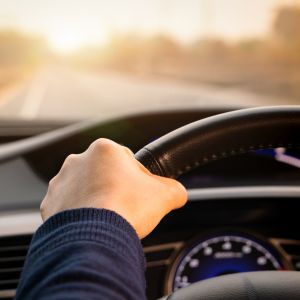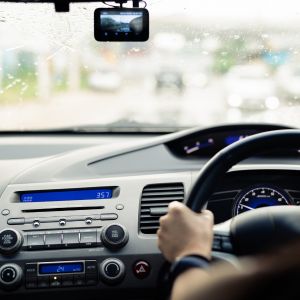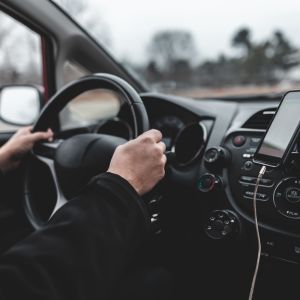Driving safely when towing a car or another vehicle behind your vehicle can be overwhelming, especially if it is your first time. Towing requires greater attention to detail than regular driving because the additional weight can affect the vehicle’s stability, stopping distance, and acceleration. It is critical to be aware of the risks and to prepare for them by taking the necessary precautions when driving safely when towing.
It is important for driving safely and responsibly when towing a car or trailer behind your vehicle. Driving with a trailer or car behind you is not the same as driving without one. It takes more concentration, caution, and skill to keep you, your passengers, and other drivers on the road safe.
Tips for driving safely when towing

For driving safely when towing on the road, careful planning, concentration, and skill are required. You can ensure a safe journey with a trailer or car behind your vehicle by following these tips and driving safely.
- Make sure that your vehicle is capable of towing. Check your owner’s manual to find out how much weight your vehicle can safely tow.
- Double-check that your trailer or car is securely fastened to your vehicle. Check that the hitch is securely attached, that the trailer’s brakes and lights are operational, and that the trailer’s tires are properly inflated.
- When towing a trailer or a car, it’s critical to obey all traffic laws, including speed limits and right-of-way rules. Make sure that your trailer or car is securely attached to your vehicle. Before you begin your journey, check the hitch and ensure that the trailer is securely attached.
- Allow for extra time and distance when towing a trailer. You’ll need more time to stop and accelerate, as well as more space to turn.
- Use your mirrors to keep an eye on the trailer. Because you won’t be able to see the trailer in your rearview mirror, use your side mirrors to keep track of its location.
- Be careful of your speed. When towing, you must drive at a slower speed and be aware of your speed limit as well as the speed of other vehicles on the road.
- Keep an eye out for other vehicles. Keep an eye on other drivers’ speeds and positions on the road to make sure you leave enough space for them to pass.
- Be prepared for unexpected events. Make sure your vehicle has a fully stocked emergency kit, including a first-aid kit, flashlight, jumper cables, and a tyre repair kit.
- Take frequent breaks. Driving with a trailer can be exhausting, so it’s critical to take frequent breaks to stay alert and safe.
What is a safety chain?

A safety chain is a towing component that provides an extra level of security in the event that the primary means of attachment between the towing vehicle and the trailer fails. The safety chain connects the towing vehicle and the trailer and serves as a backup to keep the trailer attached to the towing vehicle even if the primary hitch mechanism fails.
The safety chain is typically made of a heavy-duty metal chain with hooks or links that can be securely attached to the towing vehicle and trailer frames. To add stability, the safety chain may be crisscrossed under the trailer tongue in some cases.
It is essential to properly secure the safety chain to both the towing vehicle and the trailer and to check the chain’s tightness before towing. When driving safely when towing, using a safety chain is a critical measure that can help prevent accidents and vehicle damage in the event of a separation between the towing vehicle and the trailer.
Points to remember

There are a few things to keep in mind when you are towing a trailer or car behind your vehicle, including:
- When driving with a trailer or car behind you, it is also important to pay attention to your mirrors and the traffic around you. Because your vehicle and trailer will take up more space on the road, it is critical to be aware of other drivers and leave plenty of space when turning or changing lanes.
- Driving with a trailer or car behind you is not the same as driving without one. It takes more concentration, caution, and skill to keep you, your passengers, and other drivers on the road safe.
- You should also be aware of the extra weight you are towing behind your vehicle. This extra weight can cause the vehicle to handle differently, so remember to drive more slowly and reduce your speed when turning or going up and down hills.
- Drivers should examine their vehicle before towing to ensure it is in good condition and properly equipped to tow the load. This includes inspecting the brakes, lights, mirrors, and tyres, and before securely attaching the trailer or car to the vehicle.
- Drivers should also pay attention to their load and the conditions of the road. It’s also important to be aware of the increased wind resistance and how it affects the vehicle’s handling. Towing reduces visibility, so drivers should be aware of their blind spots.
Frequently Asked Questions
Q1. What is the safest and easiest way to back up with a trailer?
Ans. The safest and easiest way to back up a trailer is by connecting it to the car using a proper hitch and safety cables.
Q2: How do you drive and pull a trailer?
Ans. Following are the steps to drive and pull a trailer:
- Check the strength of your vehicle.
- Check whether the trailer is properly loaded or not.
- Connect the car and trailer using a hitch and cables
- Make sure the trailer is secured.
- Drive slowly
- Take breaks while driving
- Check the trailer after pulling over
- Securely remove the trailer after reaching the destination.
- Don’t forget to remove the hitch and safety cables.
Q3. What is an important safety device when towing?
Ans. The most important devices while towing a trailer are the hitch and the safety cables, because these two ensure that the trailer stays attached to the vehicle.

